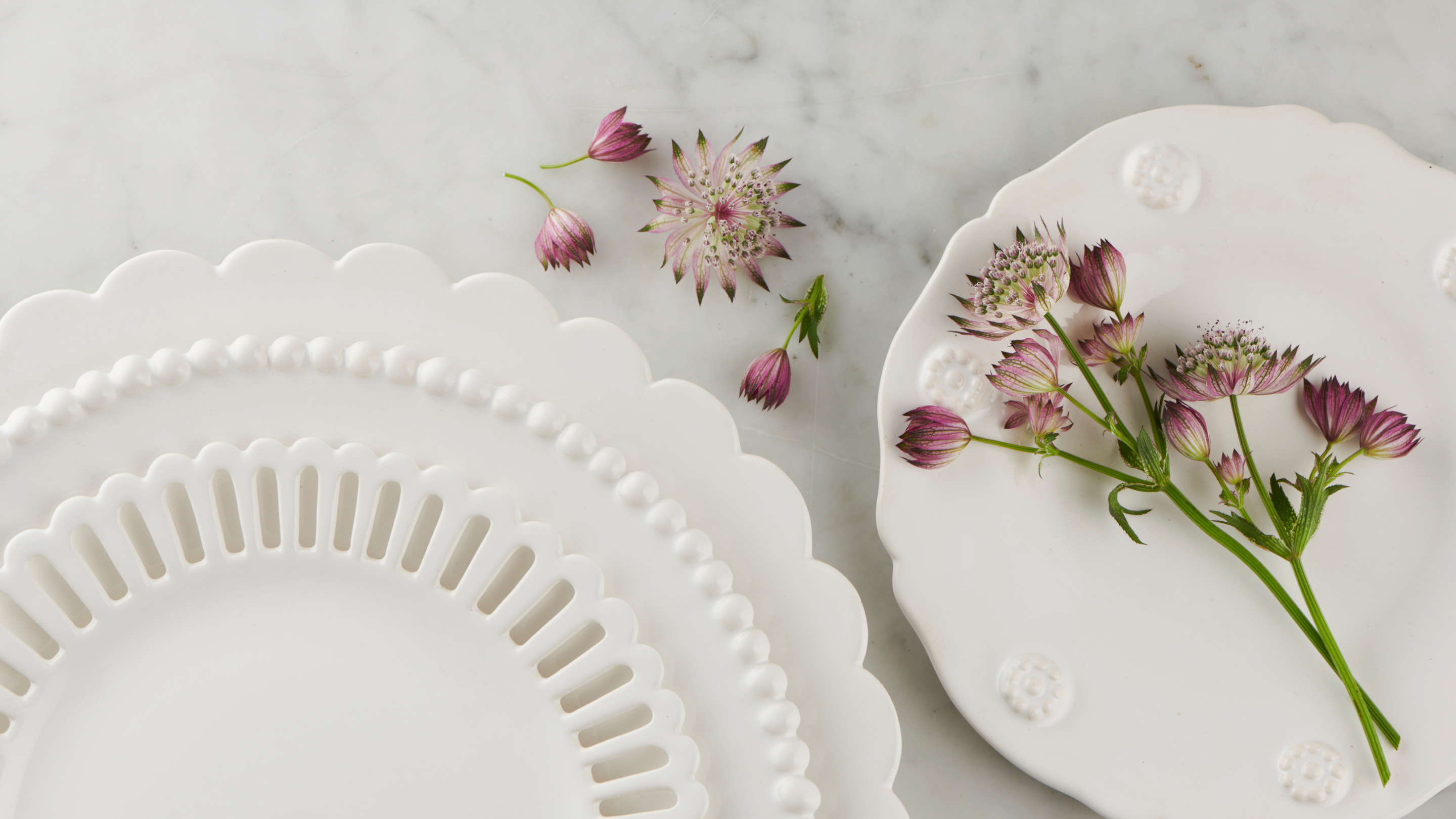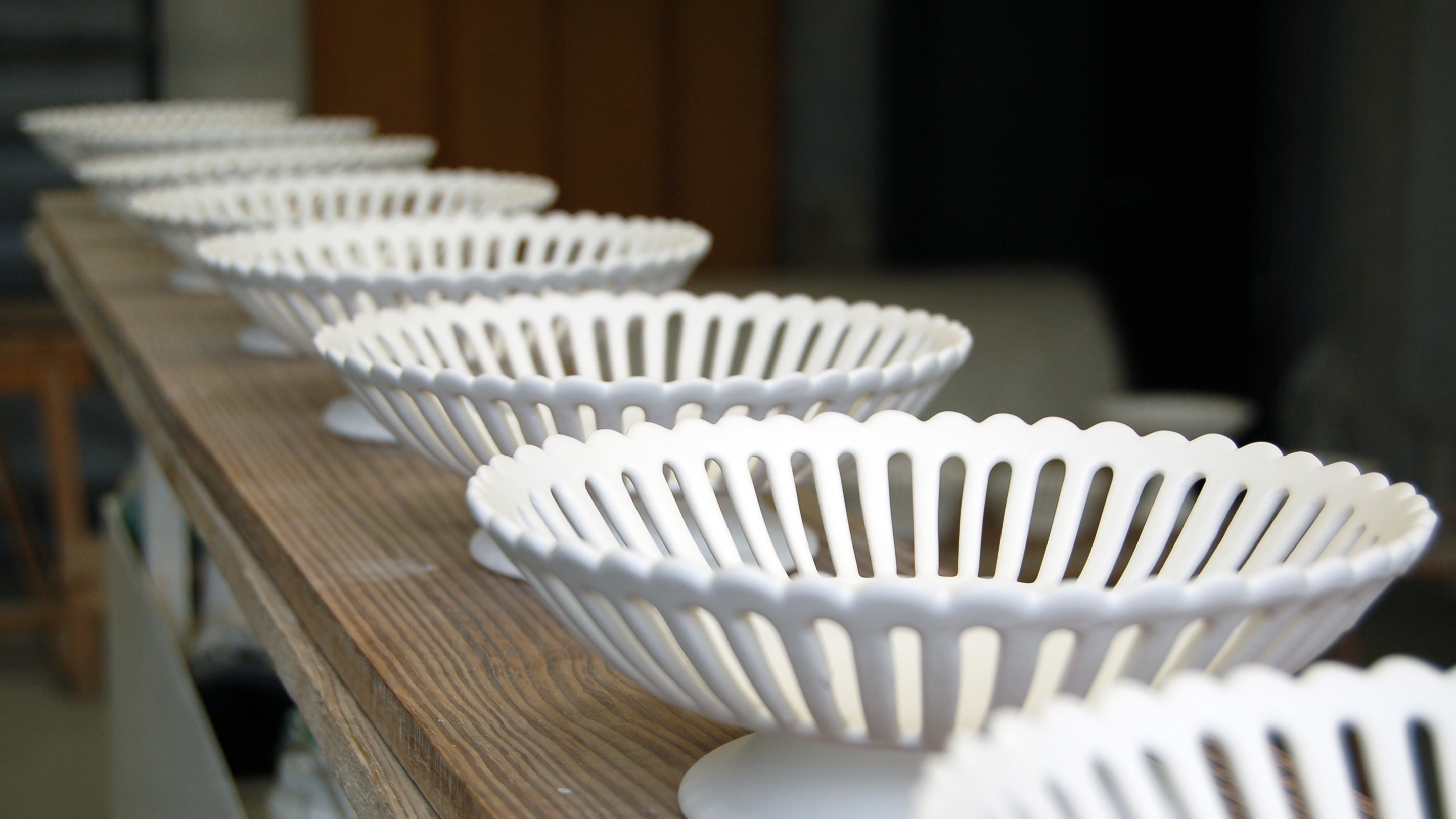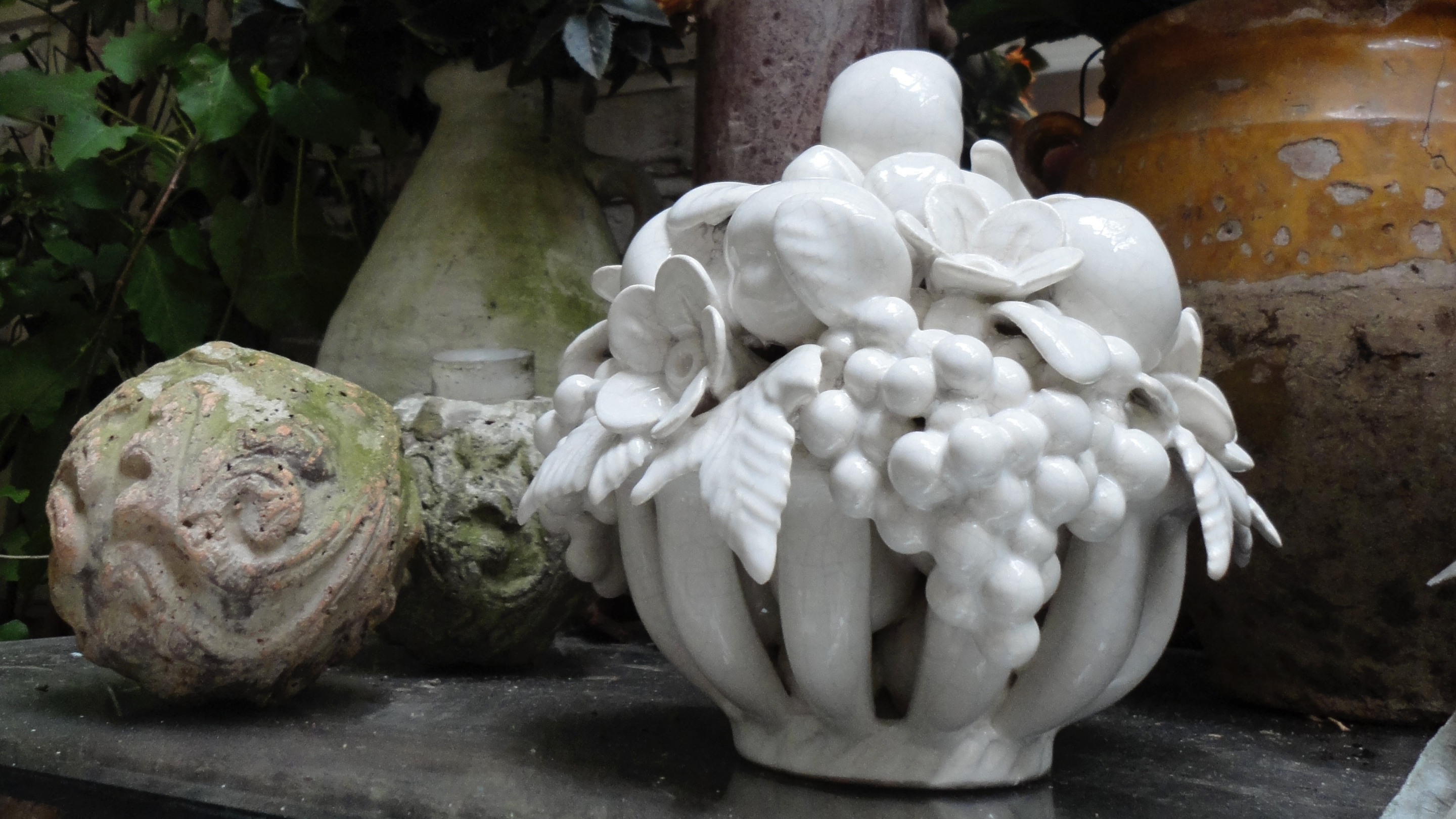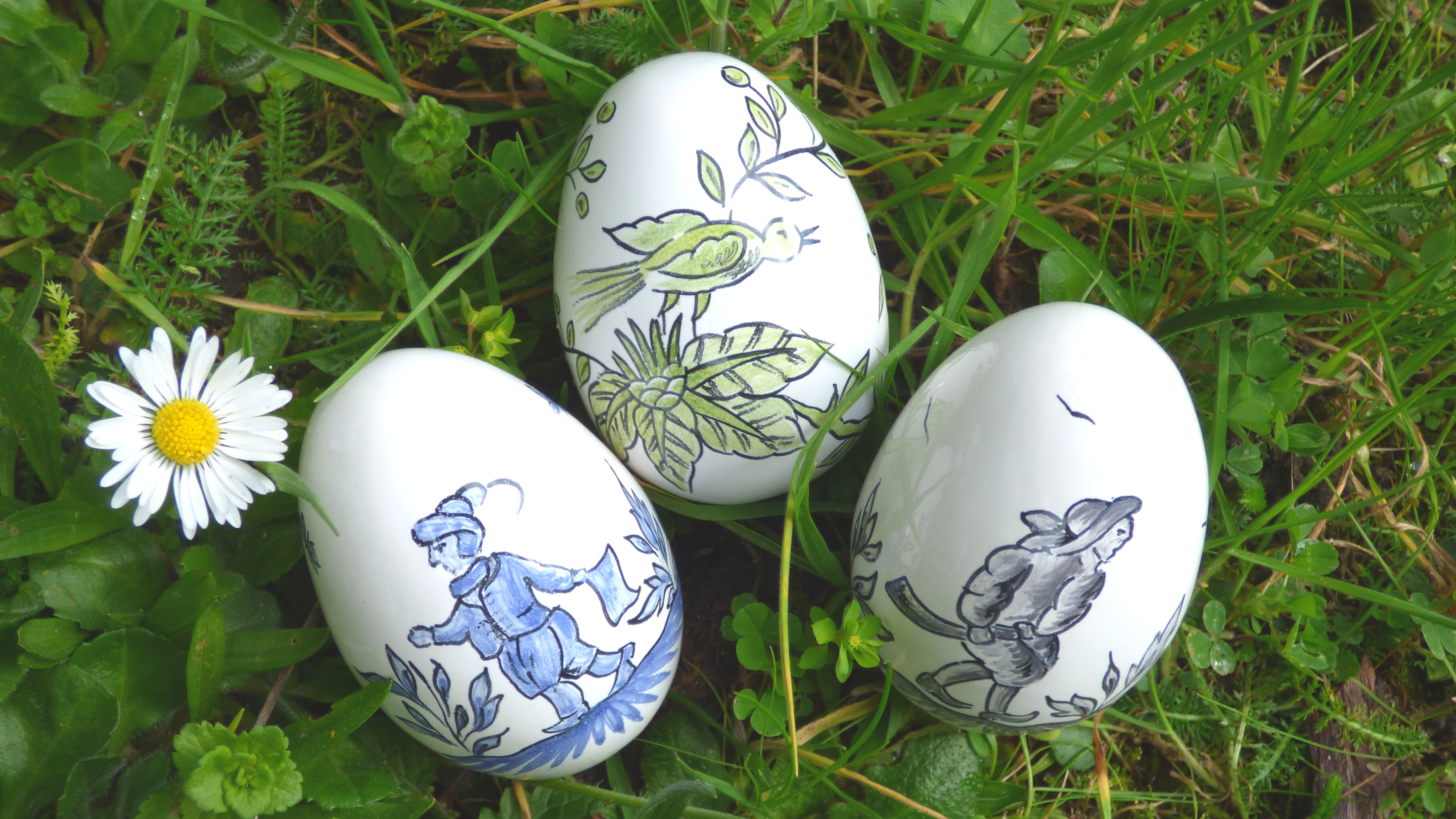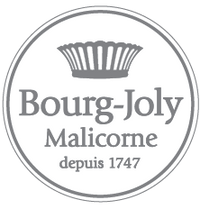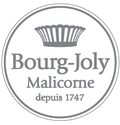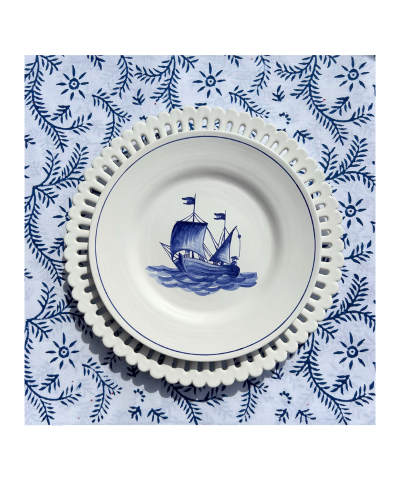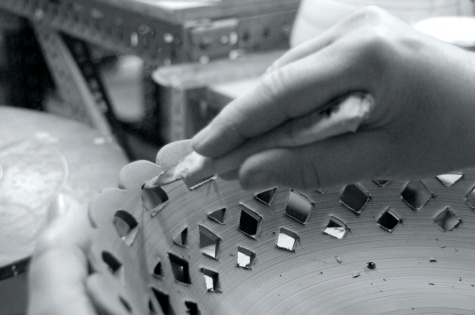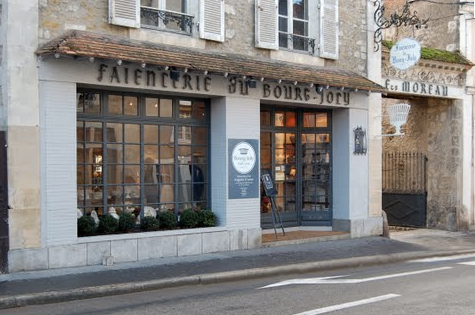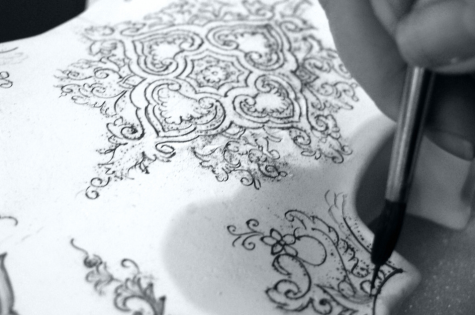L'histoire de Bourg-Joly Malicorne

Bourg-Joly Malicorne, faïence d'art du Bourg-Joly, a été fondée en 1747, au cœur de la vallée de la Sarthe par Jean Loiseau. C'est la plus ancienne faïencerie encore en activité à Malicorne.
La faïence, ou faïence étamée et émaillée, est apparue pour la première fois en France au XVIe siècle. Reproduisant à l'origine des designs traditionnellement produits en bois ou en métal pour un usage quotidien, au cours des deux siècles suivants, les styles et les designs ont évolué vers des formes finement travaillées, des proportions élégantes et des motifs artistiques peints à la main.
L'argile blanche a été utilisée pour produire les meilleurs résultats pour les pièces les plus recherchées. Des chefs-d'œuvre élaborés et des techniques exceptionnelles de sculpture à la main ont contribué à construire le nom de Bourg-Joly Malicorne et à faire connaître ses produits dans toute la France.

Bourg Joly Malicorne est l'héritier de l'histoire de deux manufactures établies à Malicorne au XVIIIème siècle - laPlat d'Etainfaïencerie fondée en 1747 par Jean Loiseau et laMèneville Faïencerie fondée en 1797 par Guillaume Rabigot, fils d'un potier ayant travaillé pour Jean Loiseau.
Au cours de nos 250 ans d'histoire, les compétences et savoir-faire ou savoir-faire de ces deux établissements fondateurs se sont transmis de génération en génération. Depuis avril 2009, une nouvelle génération de passionnés perpétue la tradition, notre histoire et nos créations au 21ème siècle.
Aujourd'hui, nos artisans continuent de fabriquer et de peindre nos produits à la main de la même manière qu'ils le font depuis plus de 250 ans. En préservant le patrimoine français, nos traditions historiques et nos techniques ancestrales, nous créons des pièces de patrimoine à la fois classiques et contemporaines, qui seront appréciées par les générations à venir.

1747
Jean Loiseau a ouvert la faïencerie du Plat d'Etain à Malicorne-sur-Sarthe.Durant la seconde moitié du XVIIIe siècle, la faïencerie du Plat d'Etain prospère et les potiers s'installent à Malicorne.
Jean Loiseau a invité les peintres céramistes de la cité historique de la faïence, Nevers, à le rejoindre. Parmi eux, Pierre Rabigot, qui introduisit à Malicorne la décoration de Nevers. Pierre Rabigot a apporté avec lui la formule de l'émail blanc à l'étain, qu'il a décoré de divers motifs floraux polymorphes et d'embellissements, motifs que nous produisons encore aujourd'hui.
Des documents historiques nous apprennent qu'en 1784, l'Inspecteur Général des Manufactures de Tours rapporte le succès de la première faïence de Malicorne.

1785
Jean Loiseau décède le 16thoctobre 1785 et il est inhumé au cimetière de Malicorne. Son fils Jean Louis lui succède. Pierre Rabigot et son fils Guillaume continuent à travailler comme potiers au Plat d'Étain jusqu'à la Révolution de 1789.

1797
En 1797, lors de l'Abolition des privilèges, la manufacture de Méneville est fondée par Guillaume Rabigot. La faïencerie de Mèneville ouvre ses portes le 13 février 1797, deuxième plus grande manufacture du village, et est l'ancêtre direct de Bourg-Joly Malicorne.
Au XIXe siècle, le Plat d'Etain continue de prospérer et est vendu à Charles Cador en 1829.

1830
En 1830, Victor Rabigot Chenon, fils de Guillaume, achète une tannerie qui comprenait un moulin à eau, au lieu-dit Bourg – Joly. En 1854, Victor Rabigot Soulis, son fils, hérite de Bourg – Joly.
Entre temps, la fille de Charles Cador (propriétaire de l'usine de Méneville), épouse Jules Béatrix qui travaille avec son nouveau beau-père. Leur travail accroît la réputation des faïenciers de Malicorne et, en 1857, leurs produits acquièrent une excellente réputation.

1867
En 1867, Caroline Cador et René Béatrix décèdent, laissant leur fils Jules Béatrix, âgé de 28 ans, prendre la tête de l'établissement. En 1874, il décède à son tour, laissant sa veuve, Éloïse Pellerin, diriger la faïencerie jusqu'à la majorité de ses filles, Marie Angèle et Marie Juliette. La fille aînée, Marie Angèle, épousa Léon Pouplard tandis que la cadette épousa Jules Michel Moreau.

1888
Léon Pouplard dirigeait l'usine du Plat d'Etain aux côtés de sa belle-mère Eloise Pellerin. Ils adoptent la même approche que la famille Rabigot à Bourg-Joly, développant une gamme de produits plus artistique pour assurer le succès continu de l'usine.
En 1898, Léon Pouplard achète des moules pour un certain nombre de statues ainsi qu'une gamme d'assiettes richement décorées, à Graindorge, un faïencier breton. La fin du XIXème siècle marque le développement d'un style artistique de faïence à Malicorne.

1899
A la mort de sa mère en 1899, Emmanuel Rabigot reprend Bourg-Joly avec l'aide de son beau-frère André Arondel. Cependant, suite à son élection comme maire de Malicorne en 1899, il vend Bourg-Joly à son cousin Gustave Leroy Dubois en 1901.
Gustave Leroy Dubois s'est concentré sur la production de faïences artistiques et de produits de haute qualité, attirant de nombreux artistes comme Hervé Mathé et Jules Ronsin à venir travailler avec lui. Avec Léon Pouplard, il rachète les moules de la faïencerie de Bonnétable lors de sa fermeture en 1912.

1914
En 1914, Gustave Leroy Dubois est appelé dans l'armée. Il vend Bourg-Joly à Marie Juliette Béatrix, qui avait hérité de la moitié de la faïencerie du Plat d'Etain, dirigée par sa sœur Marie Angèle et son mari Léon Pouplard.
C'est la fin de l'implication des familles Rabigot et Leroy Dubois à Bourg-Joly.

1918
En 1918, Jules Moreau achète Bourg-Joly pour son fils Jules, et une nouvelle dynastie va diriger le cœur artistique de Malicorne pendant 5 générations.
La Faïencerie Artistique du Bourg Joly Malicorne, axée sur la faïence artistique plutôt qu'utilitaire, a développé un réseau de points de vente à travers la France et l'Europe.
Après 60 ans à diriger sa faïencerie Le Plat d'Etain, Léon Pouplard meurt sans descendance. Il laisse la poterie à son neveu Jules Moreau. Bourg Joly Malicorne réunit alors les deux usines historiques qui ont si profondément marqué l'histoire de Malicorne.
Bourg-Joly a hérité du célèbre bestiaire de Léon Pouplard, d'innombrables gabarits et moules d'assiettes et de statues qui ont enrichi son patrimoine.

1993
En 1993, la famille Moreau vend la Faïencerie à Jean-Pierre Fouquet qui, avec son épouse Brigitte, perpétue la tradition inspirée des familles Loiseau, Rabigot, Cador-Béatrix, Pouplard et Moreau.
Les Fouquet ont aidé la faïencerie à entrer dans le nouveau millénaire. Forts de leur savoir-faire unique, ils créent la boutique 16 rue Carnot à Malicorne où le sur-mesure et les éditions limitées deviennent leur spécialité.
En 2007, La Faïencerie est rachetée par Thierry et Véronique Taravel. Les difficultés financières et les besoins importants d'investissement, exacerbés par la crise financière de 2008, ont entraîné l'arrêt de la production en décembre 2008.

2009
Une nouvelle page de l'histoire a commencé lorsque B. Denis, né à Fontaine-Daniel (53) et Eric Le Calvez accompagnés des anciens salariés et de leur savoir-faire, ont rallumé les fours le 7 avril 2009.
Aujourd'hui, Eric et Sophie Le Calvez et leur équipe tournent une nouvelle page de l'histoire du constructeur. S’appuyant sur le savoir-faire unique de l’équipe en matière de production et sur un vaste programme d’investissement dans le site historique de Bourg-Joly, l’atelier redevient le cœur battant du village.
L'atelier a été rénové, un nouveau four installé, donnant un nouveau souffle à Bourg Joly. Collaboration avec des designers, participation à de nombreux salons et expositions contribuent à repositionner et redynamiser l'entreprise.
L'entreprise trouve de nouveaux marchés en exportant vers les États-Unis, le Japon, la Suède, l'Allemagne, l'Italie, la Suisse, l'Autriche, la Belgique, le Danemark et le Moyen-Orient.

2011
Bourg Joly a été chargé de créer 342 de ses paniers ajourés signature pour le mariage royal de Monaco. Les paniers faisaient partie de la décoration de la table lors des célébrations du mariage du prince Albert et de la princesse Charlène à l’Opéra de Monaco.

2012
Bourg-Joly a été invité par M. et Mme de Nicolay à exposer des pièces chez eux au Château du Lude tout au long de l'été.
Photographie Guy Durand

2013
Bourg Joly Malicorne était au centre d'une grande exposition Le Grand Atelier EPV sur les Entreprises du Patrimoine Vivant d'exception à Harrods, Londres.
Photographie Guy Durand
2017
Bourg Joly Malicorne devient fournisseur d'art de la table de luxe d'une des plus grandes maisons de couture françaises.
2018
En 2018, Bourg Joly Malicorne a travaillé avec un designer événementiel américain exclusif pour fournir 125 délicats paniers sculptés à la main et finement dorés dans le cadre du thème inspiré du XVIIIe siècle pour le mariage de la fille d'un célèbre designer américain.
Nous tenons à remercier Odile Chardon et la famille Moreau pour leur aide dans la reconstitution de l'histoire de Bourg Joly.
